The Vixen 21 TD RV was the sports car of motorhomes
It’s long been said that finding a profitable niche and making the most of it is a surefire path to success. When muscle car pioneer Bill Collins decided it was time to move on from his design role at DeLorean (where he penned the original take on what would become the DMC-12), he turned his attention to that most neglected of ’80s market slots: the high-performance motorhome.
Of the myriad reasons one might choose to purchase a recreational vehicle—a usable kitchen, pop-out living room, or cozy sleeping space for the entire family—how much g-force it can pull on the skid pad probably ranks way down on the list. With the average Class A motorhome checking in around 33 feet in length, the idea of tilting through a slalom at a high rate of speed, or even approaching triple-digits on a straight stretch of highway, is more terrifying than tantalizing for the vast majority of RV owners.
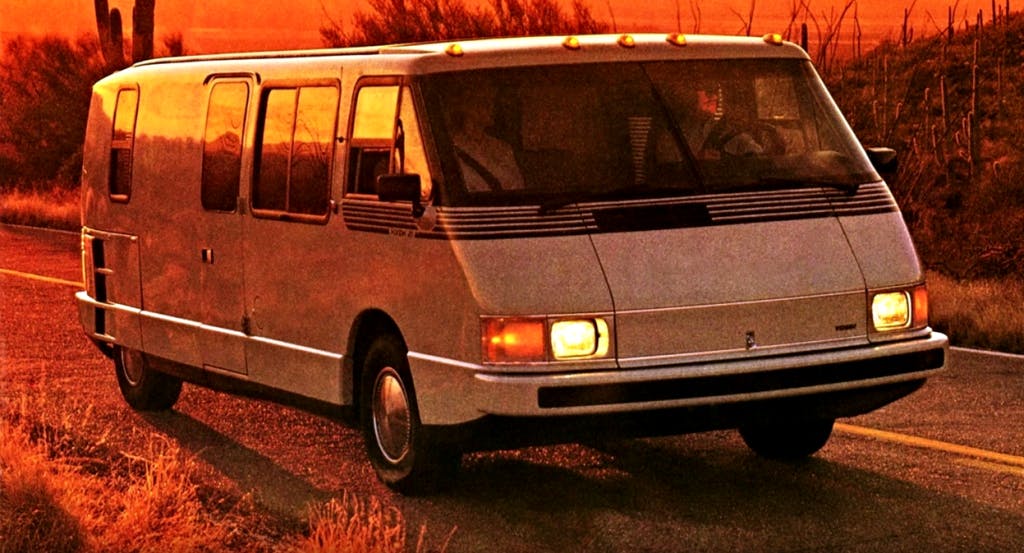
For everyone else, there’s the Vixen. After surveying the field of contemporary pushers and pullers and finding it lacking, Collins was determined to build a motorhome that didn’t just show up the competition in terms of interior comforts and road-trip-friendly practicalities. Instead, his design would borrow from Bavaria in a bid to best its rivals in terms of handling, and speed, and drivability.
The craziest thing about Bill Collins’ quixotic camping quest? He managed to pull it off.
Better, faster … smaller?
Collins was no stranger to thinking outside the box that most RVs of the era restricted themselves to. In addition to being an early part of the DMC-12 nucleus, he had also been instrumental in working for the company’s namesake, John Z., on the Pontiac GTO, a breakthrough model that would do much to define the muscle car concept in the mid-1960s.
Having enjoyed the freedom that DeLorean’s private company offered after escaping the somewhat stultifying confines of General Motors, the engineer had no intention to stop spreading his (gull) wings. By founding the Vixen Motor Company he would continue to challenge industry orthodoxy by examining the staid and stagnant designs associated with traditional recreation vehicles and then turning them on their ear.

For Collins, there were three key aspects of the RV experience that required immediate improvement. The first was fuel consumption. As long as motorhomes remained rolling cinderblocks, there was little chance in raising their efficiency above the sub 10-mpg dregs, where they had long lingered.
Handling every aspect of the design process himself (and sloughing off the business side of Vixen to his partners), Collins set out to significantly lower the roofline of the vehicle that would eventually become the Vixen 21 TD. The goal was twofold: Not only would a sleeker shape better cut through the air, but it would also be able to slip underneath the more modest accommodations offered by the standard suburban garage. The final design would stand only seven feet tall, and it featured a drag coefficient of less than 0.30, or just 0.01 above the first-generation Toyota Prius.

The next target for the nascent motorhome blueprint was to dramatically boost handling. As its name might suggest, the 21 TD was as many feet long, which made it roughly two-thirds the size of a standard RV. A lower, shorter motorhome would seem counterintuitive in terms of interior space, but the Vixen punched out its cabin by way of a 24-inch pop-up roof panel as well as an ultra-wide stance, with the latter further contributing to the vehicle’s above-average cornering stability. With a low center of gravity and a broad footprint, the 21 TD stood in stark contrast to the cargo container dimensions of its rivals, not just in terms of appearance but also driving dynamics.

The final piece of the Vixen puzzle would be its drivetrain. Unwilling to lazily slap in a big block V-8 and call it a day—a feature of so many other ’70s and ’80s RVs—Collins instead turned to that least likely of motorhome motivators: BMW. The 21 TD borrowed its 2.4-liter inline six-cylinder turbodiesel engine (which would also pull duty for Lincoln in the Mark VII) from the European luxury automaker and matched it with a Renault transaxle, with both mounted at the rear.
That French gearbox? It also happened to feature a third pedal and a manual shifter, dovetailing perfectly with Collins’ desire for the Vixen to not just be frugal, but also as close to a “driver’s motorhome” as possible despite its still considerable bulk.
Best in Class RV handling
Vixen would debut the 21 TD at the Detroit International Auto Show in 1986, and it turned more than a few heads with what at first seemed like outlandish claims about its capabilities. Collins was adamant that not only would the 21 TD best 30 mpg on the highway, but it would also crest the 100-mph mark on a long enough stretch of road—two things that motorhomes of the day were notorious for not doing, even downhill with an F5 tornado providing a tail wind.
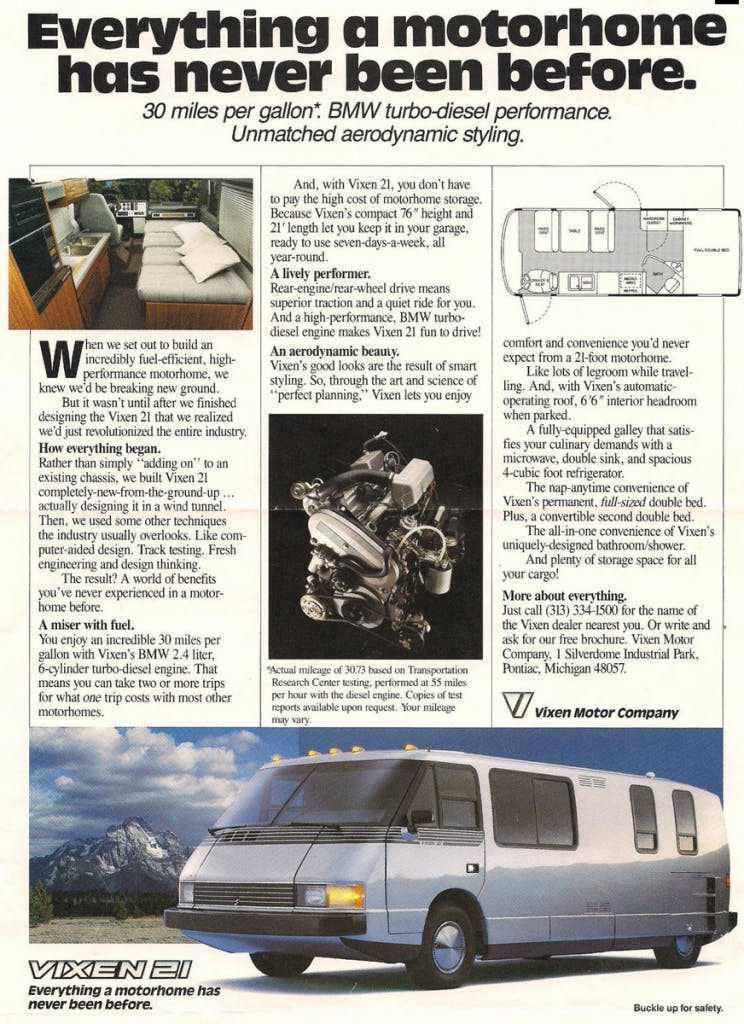
Surprisingly, Collins was right on both counts. Although few owners would tempt fate at the time, modern Vixen stewards have entered the TD 21 in land speed contests and posted radar-verified speeds matching its advertised capabilities—not bad considering its 115-horsepower rating. The Vixen’s efficiency, however, was far easier to verify on public roads, and this combined with the vehicle’s excellent handling and the novelty of a shift-it-yourself camper of this size would quickly win it praise from all quarters of the RV community. Some owners were so tickled by their fun-to-drive motorhomes that they began to affix BMW badges to the front, reflecting the engine inside and confusing nearby dealers forced to field calls from 7 Series owners seeking the next step up in long wheelbase luxury.
Hitting the wrong target
Unfortunately for Vixen, positive press and satisfied owners didn’t translate into an onslaught of sales. It turns out that aside from its ease of parking there wasn’t much about the TD 21 that appealed to the RV mainstream, and the tiny sliver of thrill-seeking motorhome buyers was quickly exhausted.
After two years of middling interest, Collins’ partners forced the expansion of the Vixen fleet to include less innovative, and more “normalized” options, including a taller fixed-roof variant (the SE) that swapped in a GM 3.8-liter V-6 and four-speed automatic transmission, as well as a small run of “limo” models (the XC) intended to serve the party bus crowd.
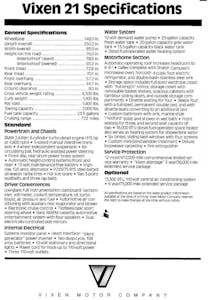
Collins was understandably incensed at having been overruled by his own board, and he viewed the SE in particular as going against everything he had set out to achieve with the 21 TD. From his perspective, the 21 SE had too many similarities to the classic, and outdated, GMC motorhome template it had been intended to replace. He was at least partially vindicated when the gas-powered motorhome sold only 172 examples (compared to 376 TD editions), but it was a pyrrhic victory at best that would end with Vixen Motor Company’s insolvency in 1989.
Despite now approaching middle age, the 21 TD, SE, and XC have enjoyed healthy interest from enthusiasts through the Vixen Owners Association, which regularly gathers together large numbers of Vixen RVs from around the world. Collectors are also beginning to take notice of the vehicle, with examples trading hands for between $30,000–$40,000, depending on condition.
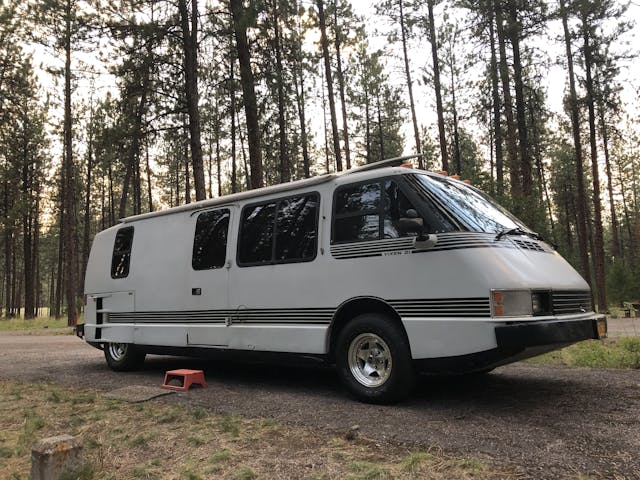
Vintage motorhomes are heating up, and despite the Vixen’s futuristic looks and unusual running gear, it isn’t any more expensive to own or operate than a less intriguing design. Although not particularly quick by modern standards, the 21 TD (and to a lesser extent, the SE) is still just as competent through the curves as it was nearly 40 years ago, and infinitely less thirsty at the pump than any of the beached land whales currently parked in front of the local retirement castle. And how many of those come with their own promo video lining them up against open wheel cars on a race track and then carving corners on that same road course?
That’s what we thought.

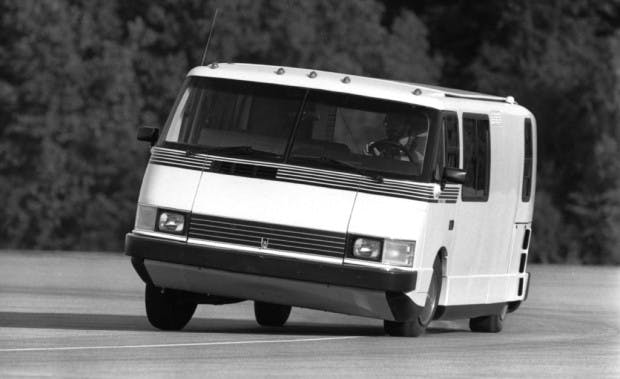
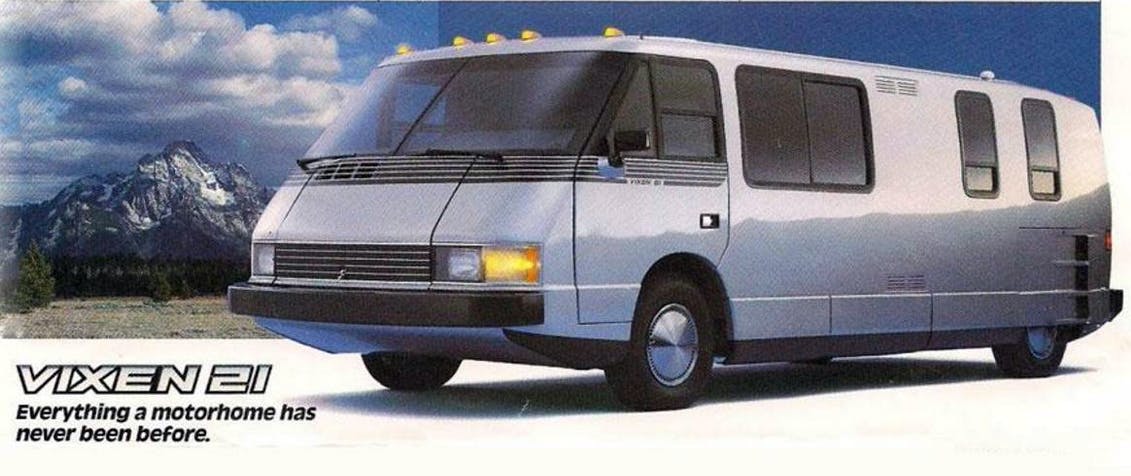
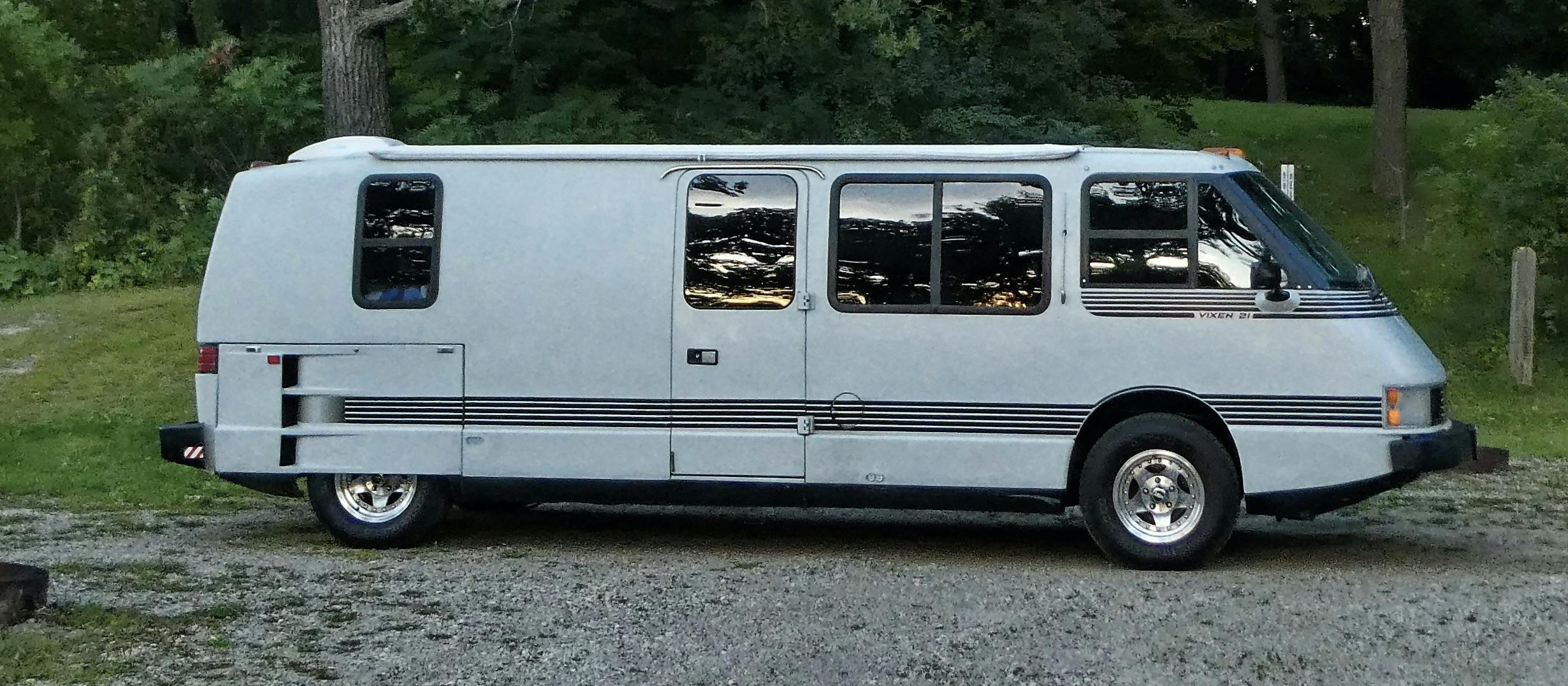


Lovely looking motorhome. I consider it a damn shame it was only produced for such a short time, between 1986-1990. I can imagine this would be perfect for the newbie RVer who has never driven a motorhome, a traveling entrepreneur, or a veteran RVer looking to downsize from a 40ft+ diesel pusher a 20ft possible diesel pusher. I’d have a Duramax 2.8 litre Turbo Diesel installed.